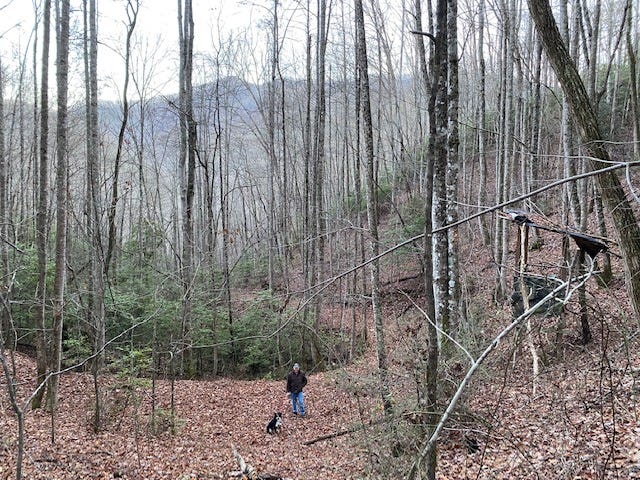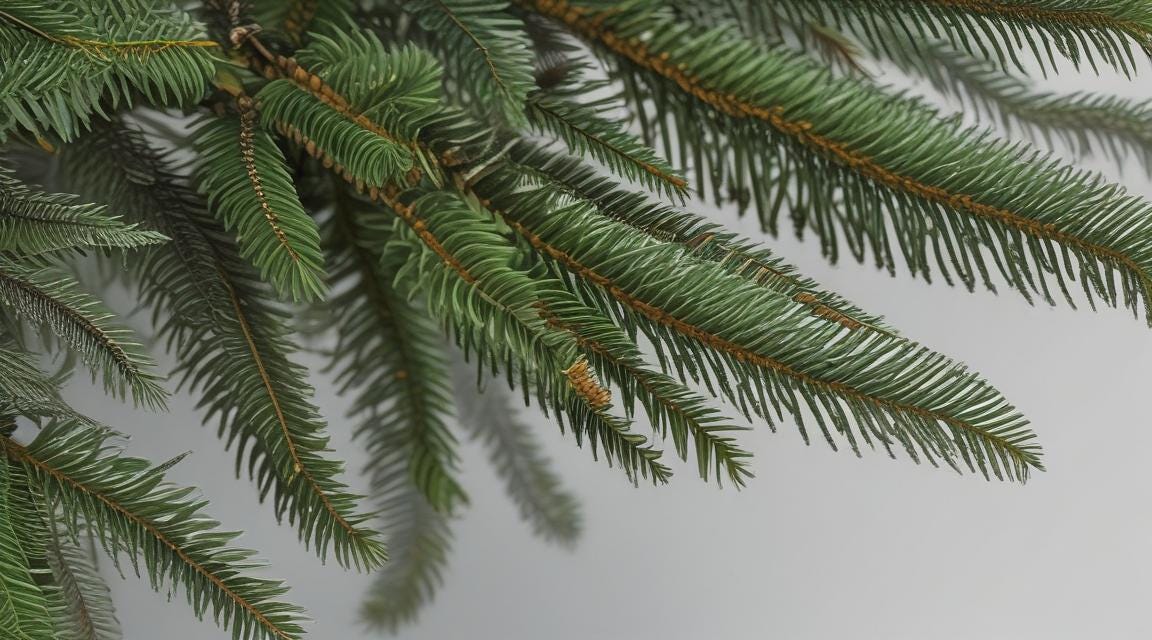Starting a permaculture Christmas tree farm
I love learning about permaculture systems that set up resilient habitats. Now I get to try out some permaculture Christmas tree practices.
As I continue my weekly tradition of sharing special news to celebrate this blog’s first anniversary next month, I also want to point out that we are 3 posts away from my 100th post! I’ve had so much to share over the past year and, as you may be able to tell from the news I’ve shared in recent posts, I have a lot more to share. Today I’m revealing that I’m starting a permaculture-based Christmas tree farm experiment. The land we acquired over the winter has many characteristics that I feel make it a candidate for this experiment. When fall rolls around, the bees and garden don’t require as much attention, so I have more flexibility with my time. Fall is also an ideal time to sow certain varieties of seeds and transplant perennials. With low tree labor needs during the high garden season, a Christmas tree farm experiment feels like a natural fit and will foster native species. In today’s post I’ll take you through my thought process, how I came to the idea, and the permaculture practices that I plan on implementing as I select transplant sites in advance of fall.
Where this tree farm idea came from
We’ve had access to the land for a few years, so I was somewhat familiar with the landscape. However, once we purchased the property, I started scanning the landscape with a new lens. In permaculture, you turn waste, problems, and abundance into solutions. The access road isn’t well-maintained, so any use would require a UTV or infrequent visits. There’s also a lot of tree coverage and dense corridors of mountain laurel and rhododendron—signs of minimal sun penetration and acidic soil. A mountain spring provides water in abundance and almost directly through the center of the property, creating potential for gravity-fed irrigation to many areas.
Knowing that we want to preserve wildlife habitat and cause minimal disturbance—no building or mass tree clearing—I started to think about potential uses that would require seasonal and infrequent labor, minimal materials, and fit with the existing landscape. I’ve always wanted to try growing our own Christmas trees. From my earlier research, I knew that the native Fraser firs (Abies fraseri) thrive in higher elevations. However, even though high elevation is ideal, North Carolina has Christmas tree farms across the entire state—several much closer to sea level.
North Carolina is the #2 producer of Christmas trees in the nation, and ships trees to every state and internationally. Almost 20 years ago, the North Carolina General Assembly passed legislation that made the Fraser fir the state’s official Christmas tree. It’s the only fir native to high elevations of southern Appalachia. Knowing its indigenous history and resiliency, I started to lean toward an experiment for growing our own trees.
Soil and slope
Fraser firs prefer acidic soil. The existing bands of mountain laurel and rhododendron that I mentioned indicate acidic areas. Fraser firs are also naturally found in the understory of maple and birch, which appear in clusters throughout the property. These signs help me to scout areas where I can incorporate fir into the existing landscape. Unlike commercial monoculture farms with row after row of fir, the design I’m creating with a permaculture lens intends to set the fir up for success in as close to its natural habitat as possible.
Firs naturally thrive without standing water. The topography of the site is full of slope, which means no standing water. Although the mountain spring provides a constant water source, the slope helps drive the water into specific areas without saturating the surrounding banks. The benefit of planting fir on slope is that they help stabilize the soil, which can help prevent erosion and support soil structure and habitat.
Firs prefer elevation and rain
A high elevation and rainforest environment are ideal for fir. While the property ranges from about 2,300’ to 2,600’, it falls short of the model Fraser habitat at 3,500’ and above. I’m taking a few approaches to help support this deficit:
Observing the land and looking for microclimates that mimic higher elevations
Selecting sites that fit all other measures of success
Experimenting with sites at the highest points
As far as the rainforest aspect, we’re fortunate to be in southern Appalachia’s temperate rainforest. Fraser firs prefer cool, moist environments. Some of the experimental areas I’ve scouted are near the creek so that the fir can benefit from the constant evaporation. They also prefer fog, so identifying areas where fog settles as it rolls in also play a helpful indicator for sites.
Friends of Fraser fir: companion plants
I already mentioned the laurel, rhododendron, maple, and birch. Fraser fir also serve as an understory to chestnut oak and hickory, both found in moderate density around the property. Firs can thrive in shade and low light, so the existing habitat supports their needs.
When considering the understory of the fir, several ideal perennial, native companions include blueberries, elderberries, and woodland botanicals like black cohosh. Fortunately, there’s an abundance of elderberry on the site, so there’s opportunity to take cuttings and propagate (clone) the existing plants that are already adapted to this specific climate. While I don’t plan on experimenting with it since I prefer to focus on native species for these low-labor spaces, from my research I read that rhubarb, broccoli, cauliflower, tomatoes, and pumpkins thrive when interplanted between fir.
Another permaculture practice: Coppicing
Unlike monoculture Christmas tree farms that cut a single harvest from a tree, a permaculture approach is coppicing. Coppicing is a practice of cutting a tree at its base and allowing it to regrow. It removes the need for sourcing a new tree, takes advantage of an established root system, and relies on the resiliency of the plant that’s already adapted to the climate and environment. It also allows for multiple harvests from a single plant.
A long experiment
Most species used for Christmas trees take 7-to-10 years to harvest. I’ve identified some tree farms with Fraser fir saplings spanning several ages, so I can start transplants this year that could be harvested in as little as 2 years. While I haven’t written out a formal timeline for this experiment, my initial reflex is to plant a variety of ages and sites this fall and observe them for 2 years. This primarily will reveal whether the site supports fir. If it doesn’t, I can explore alternative uses. If it does, then I can use performance from the various sites to decide future plantings, quantities, and successions.
I’ll share more about this experiment when I transplant and check the sites each season. Have you tried growing your own Christmas trees? Let me know how it goes.





